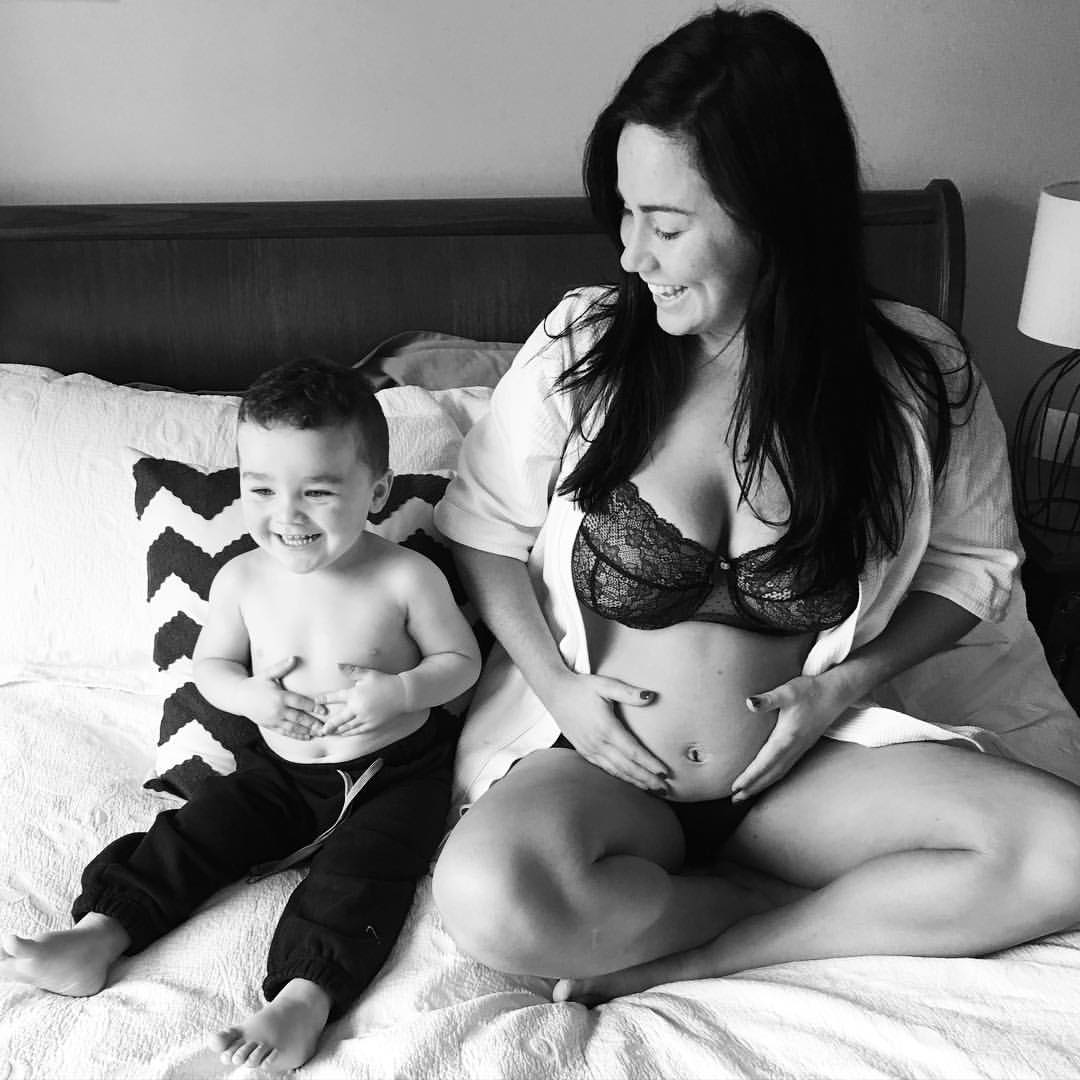Hugely popular blogger Sophie Cachia (formerly Shaw) from The Young Mummy Blog announced to the world over the weekend that she was excitedly expecting baby number two after trying for 8 months to fall pregnant.
Sophie posted in April about the conception troubles she was experiencing both on her blog and across her social media platforms. The outpouring of support from women who’d experienced something similar was huge, with many sharing their own experience of conceiving without issue the first time yet having trouble the second (or third or fourth) time around.

The Young Mummy announces her second pregnancy
(Image via Facebook)
The National Infertility Association defines secondary infertility as the inability to become pregnant, or to carry a pregnancy to term, following the birth of one or more biological children. It occurs after a routine first pregnancy where baby was conceived naturally and the pregnancy ran as normal.
Generally, a couple will have experienced around 12 months of ‘conception’ sex and/or multiple miscarriages before medical professionals will begin to discuss the possibility of secondary infertility.
The number of couples experiencing secondary infertility is hard to get a gauge on due to the complex physical and emotional issues surrounding the topic. While primary infertility is often quite widely discussed, secondary infertility is downplayed, even by medical professionals.
Many couples feel completely caught off guard by the difficulty of having a second child and are afraid to speak openly and honestly, as it means both admitting that there is a problem and also opening up to the inevitable responses that are unique to secondary infertility. ‘Helpful’ advice like telling a couple not to worry as they’ve done it before and can no doubt do it again, or reminding them how lucky they are to already have a child/children is not only unhelpful but extremely upsetting for the couple.

Primary and secondary infertility is a medical issue. There are a number of possible factors that may come into play though in some cases, no cause can be medically explained. Some of the most common include:
- Advanced reproductive age: A woman’s age is one of the most common reasons for secondary infertility. It is important to understand that a woman is born with all of the eggs she will ever have. As a woman ages, her ovarian reserve will diminish. This means that her egg quantity and egg quality will decrease, while the chance of miscarriage increases.
- Structural complications: Some other important factors relate to the structures in the pelvis which includes the fallopian tubes. Pelvic adhesions which may be caused by endometriosis or prior abdominal surgeries – may make it difficult for the egg to be picked up by the fallopian tube. In addition, if there were complications that developed during a prior delivery, intrauterine adhesions or adhesions that develop around the fallopian tubes may have occurred.
- Sperm quality and quantity: Just as a woman’s fertility can change with time, so can a man’s. Changes in sperm quality and quantity may occur due to changes in health or new medications. A semen analysis is one of the basic aspects of the initial infertility evaluation.
- Weight gain: Weight can have a huge impact on the ability to conceive. Excessive weight gain can contribute to ovulatory dysfunction. With increased weight, insulin resistance can increase as well which leads to elevated production of testosterone from the ovaries, a phenomenon that can further prevent normal ovulation. In men, excessive weight can also negatively affect sperm production by increasing oestrogen levels.
- Smoking: Cigarette smoking in both the male and female can significantly impair the ability to conceive. And, smoking can seriously impact a woman’s ability to carry a normal pregnancy.
The best way to manage secondary infertility is with the help and support of an expert or team of experts. Most experts advise you not to be concerned unless you have been trying to conceive for at least one year and are under 35. If you are over 35 and have been trying for 6 months, you should consult a physician. If you are over 30 and have a history of pelvic inflammatory disease, painful periods, miscarriage, irregular cycles, or if you know that your partner has a low sperm count, do not wait one year.
Taking the first step and booking an appointment with your GP can be tough. It means coming face to face with the fact that perhaps something isn’t quite right. It can also mean discussing things like infertility treatment which can be disheartening and at times, confronting. Making sure your partner is on the same page and that you are ready to face what is ahead together is important.
Your GP can refer you to a specialist depending on what they determine may be the issue. Specialists may include a Reproductive Endocrinologist, urologist, or in some cases an Obstetrician/Gynaecologist.
Remember throughout that you’re not alone. Many couples experience what can seem to be an isolating and lonely experience. Reaching our to trusted friends or family can be helpful, even if it seems hard to do. There is also plenty of online support available through websites and forums. The Resolve website can help you access support as well as resources and other information. You can find the website HERE.
Every month on the 28 Day Weight Loss Challenge, we run a BRAND NEW 28 Day Menu with a different theme so you NEVER get bored!
Next months theme is the WINTER! – Perfect for the chilly weather, SUPER easy to whip up and still just as healthy.
If you are curious about the 28 Day Challenge recipes then we have a 28 Day Challenge recipe pack for you to try HERE.
Find a delicious range of healthy recipes, packed full of energy boosting ingredients and nutrients together with easy to achieve exercise.


